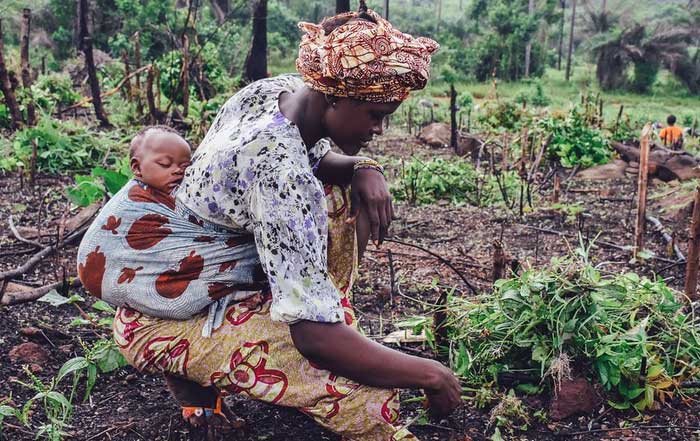Caring for nature is no longer an optional act of goodwill; it has become a global necessity. In 2025, as climate instability, biodiversity loss, and unsustainable consumption continue to accelerate, businesses, governments, and individuals are being challenged to redefine their role in environmental stewardship. The health of the planet is intimately tied to human survival, economic resilience, and overall well-being. By exploring practical solutions that integrate sustainable lifestyles, responsible business practices, and policy-level strategies, society can move toward a healthier and more balanced coexistence with the natural world.
This guide is designed for readers worldwide but especially resonates with communities in the United States, Europe, and Asia, where consumption patterns and economic influence have a disproportionate effect on environmental outcomes. It draws from the expertise of leading organizations, sustainability researchers, and innovative businesses, while also presenting actionable pathways for individuals who want to contribute to lasting change. For eco-natur.com, a platform dedicated to sustainability and conscious living, this article underscores the importance of aligning personal actions with systemic change.
Why Caring for Nature Matters
The environment is the foundation of all economic and social systems. Without fertile soil, clean air, fresh water, and biodiversity, human societies cannot thrive. The global economy itself depends on ecosystem services estimated to be worth trillions of dollars annually, from pollination that supports agriculture to wetlands that filter water. Yet these services are increasingly threatened.
In the last five decades, humanity has altered ecosystems more rapidly and extensively than at any point in history. Reports from the United Nations Environment Programme (UNEP) highlight that nearly one million species are at risk of extinction, largely due to human activity. Industrial expansion, deforestation, unsustainable farming, and the overuse of plastic have all contributed to a severe decline in biodiversity and the natural systems that regulate climate and sustain life.
Recognizing this interdependence, global citizens must now prioritize sustainable living to ensure a stable and secure future. For readers interested in practical action, sustainable living practices offer a blueprint for aligning daily choices with environmental preservation.
Sustainable Lifestyles for Everyday Living
Reducing Waste and Embracing Zero-Waste Principles
Waste management remains one of the most pressing environmental challenges, particularly in urban centers. According to the World Bank, global waste is expected to increase by 70% by 2050 if current patterns persist. Individuals can take meaningful steps by reducing consumption, composting organic matter, and supporting a zero-waste lifestyle.
Innovative businesses are making this easier. Companies such as Loop and TerraCycle are working with global brands to introduce reusable packaging systems, demonstrating that waste-free commerce is possible on a global scale. Consumers can also avoid single-use plastics by choosing refillable containers, buying in bulk, and shopping at zero-waste stores that are expanding across North America and Europe.
Learn more about plastic-free alternatives to everyday products, from bamboo toothbrushes to compostable packaging.
Eating Organically and Supporting Local Agriculture
Food production is one of the largest contributors to greenhouse gas emissions and deforestation. By shifting diets toward seasonal, plant-based, and organic options, individuals reduce their ecological footprint while supporting healthier ecosystems. Studies from Harvard T.H. Chan School of Public Health reveal that diets rich in organic produce not only benefit health but also reduce pesticide use and soil degradation.
Farmers’ markets in cities such as London, Berlin, and New York are thriving, showing how communities can connect directly with sustainable producers. Consumers can amplify this by supporting organic food initiatives, which promote soil health, reduce chemical inputs, and protect pollinators critical to biodiversity.
Sustainable Energy in Homes and Communities
Energy choices directly influence environmental outcomes. By adopting renewable energy sources such as solar, wind, and geothermal, households can reduce dependency on fossil fuels. Countries like Germany and Denmark have led the way with incentives for rooftop solar and community wind farms, while in the United States, states such as California and New York are scaling up clean energy policies.
Transitioning to renewable energy systems also empowers individuals to contribute to decarbonization efforts. In 2025, accessible solar panels and affordable battery storage are making clean energy a mainstream reality across many countries, helping communities achieve greater resilience against energy crises.
🌱 Personal Sustainability Impact Calculator
Protecting Wildlife and Biodiversity
The survival of wildlife is an indicator of environmental health. Species diversity ensures ecosystem stability and resilience, yet industrial expansion and human encroachment threaten countless habitats. Protecting endangered species requires global cooperation, national policies, and community-based action.
Conservation organizations such as World Wildlife Fund (WWF) and Conservation International are working across Africa, South America, and Asia to preserve habitats critical for elephants, tigers, orangutans, and countless other species. Individuals can support this work by adopting sustainable tourism practices, reducing meat consumption linked to deforestation, and advocating for stronger wildlife protection laws.
On a personal level, creating green spaces in cities—such as pollinator gardens or urban forests—helps restore ecological balance. For readers seeking to explore this subject further, wildlife protection remains a central theme of environmental action.
Recycling and Circular Economy Models
Closing the Loop on Waste
Traditional economic models are linear: produce, consume, and discard. In contrast, the circular economy emphasizes designing out waste, keeping materials in use, and regenerating natural systems. Recycling is an essential part of this model, yet it must be supported by responsible design and consumer participation.
Countries like Sweden and the Netherlands are global leaders in recycling infrastructure, with advanced systems that recover and reuse materials across industries. For instance, Sweden recycles nearly 99% of household waste, converting much of it into energy. Meanwhile, the European Union’s Green Deal prioritizes circularity to reduce reliance on virgin resources and curb carbon emissions.
Consumers can advance this transition by supporting businesses that use recycled materials, properly sorting household waste, and encouraging governments to improve recycling infrastructure. Explore recycling solutions that contribute to a healthier planet.
Caring for Nature Through Sustainable Business Practices
Businesses have the power to shape markets and consumer behavior, making them central to caring for nature. Corporate sustainability strategies are no longer a public relations tool but a core requirement for resilience and competitiveness.
Unilever, for instance, has committed to achieving net-zero emissions by 2039 while reducing plastic packaging through innovative designs. Patagonia, long regarded as a leader in corporate responsibility, invests heavily in environmental activism and repair services to extend product lifespans. Tesla continues to disrupt the automotive industry with electric vehicles and renewable energy solutions, influencing broader adoption of clean technology worldwide.
For business leaders, aligning with sustainable business models not only improves environmental outcomes but also attracts conscious consumers and investors. Research shows that companies with strong ESG (Environmental, Social, and Governance) practices outperform peers financially while building brand loyalty in an increasingly eco-aware market.
Global Policy and International Cooperation
The Role of Global Agreements
International collaboration is at the heart of caring for nature because environmental challenges transcend national borders. Agreements such as the Paris Climate Accord and the Kunming-Montreal Global Biodiversity Framework are designed to unify countries around common goals, including limiting global warming, restoring degraded ecosystems, and halting biodiversity loss.
These agreements highlight how interconnected the global community is when it comes to environmental health. For example, if forests in Brazil are destroyed, it affects rainfall patterns in Africa and Asia. Similarly, if coal plants remain dominant in one country, it undermines climate targets elsewhere. Strengthening global commitments is therefore essential, as is the accountability of signatory nations.
The Intergovernmental Panel on Climate Change (IPCC) continues to provide authoritative scientific reports that guide policy decisions, while organizations such as UNEP and World Bank support financing mechanisms for green transitions. To understand how individuals and communities can align with these global strategies, readers may find insights in sustainability discussions relevant to their own region.
Regional Leadership in Environmental Stewardship
Different regions have developed distinct approaches to sustainability, reflecting their economic structures and cultural contexts.
Europe has advanced climate and biodiversity policies through the European Green Deal, promoting renewable energy, sustainable agriculture, and circular economy principles. Countries like Germany, Denmark, and Sweden consistently rank among the top performers in global sustainability indexes.
United States policies have evolved rapidly, with the Inflation Reduction Act of 2022 providing billions in funding for renewable energy projects, electric vehicles, and infrastructure resilience. In 2025, this act remains one of the largest climate investments in history.
Asia-Pacific nations, including Japan, South Korea, and Singapore, are leading in technology-driven solutions for sustainable cities, while China has invested heavily in renewable energy production and electric transportation.
These examples illustrate that caring for nature requires localized action supported by international frameworks. What unites them is the recognition that sustainable development benefits not just ecosystems but also long-term economic stability.
Building Sustainable Cities and Urban Communities
Rethinking Urban Infrastructure
Cities are home to more than half the world’s population and account for over 70% of global carbon emissions. This concentration of people and resources makes urban areas a critical front in the fight to protect nature. Designing cities that integrate green infrastructure, renewable energy, and efficient public transport reduces environmental pressures while enhancing quality of life.
Copenhagen has become a model of urban sustainability, aiming to be the world’s first carbon-neutral capital by 2025. The city invests in bike infrastructure, renewable energy, and green roofs. Similarly, Singapore integrates nature into its dense urban landscape with vertical gardens, water-sensitive design, and widespread tree-planting initiatives.
For readers inspired by these examples, exploring sustainable living approaches can help connect city-based lifestyles with ecological responsibility.
Circular Economy in Cities
Urban areas also generate vast amounts of waste, but they are equally positioned to become hubs of circular innovation. Cities such as Amsterdam and San Francisco are experimenting with closed-loop systems where waste becomes a resource for energy, building materials, or industrial production. These models are essential for reducing landfill dependency and minimizing pollution in waterways and oceans.
Adopting recycling systems at both municipal and household levels helps foster this transition. Coupled with digital tools that track resource flows, circular cities represent a practical vision for caring for nature while supporting dense human populations.
Economics of Caring for Nature
Shifting from Extraction to Regeneration
The global economy has historically been driven by extraction—taking raw materials, using them, and discarding the byproducts. This model is incompatible with long-term planetary health. A regenerative economy, on the other hand, emphasizes the restoration of natural systems alongside economic productivity.
For businesses, this means prioritizing renewable inputs, designing recyclable products, and investing in ecological restoration projects. For governments, it requires policy shifts that value natural capital, recognizing ecosystems as assets rather than externalities. Reports from World Economic Forum estimate that transitioning to a nature-positive economy could generate trillions of dollars in new business opportunities while creating millions of jobs worldwide.
Readers interested in the broader relationship between markets and ecosystems can explore economic insights on how financial systems intersect with environmental health.
Sustainable Finance and Investment
Capital markets are increasingly aligning with sustainability goals. Green bonds, carbon credits, and ESG funds have moved from niche offerings to mainstream financial products. Investors now recognize that unsustainable business practices present long-term risks, from stranded fossil fuel assets to reputational damage.
Financial institutions such as BlackRock and HSBC have announced stronger commitments to financing renewable energy and sustainable infrastructure. Meanwhile, sovereign wealth funds in Norway and Singapore are redirecting capital toward climate-positive initiatives.
Caring for nature at the financial level ensures that resources flow into businesses and innovations that support regeneration rather than degradation. This shift underscores that environmental stewardship is not just a moral responsibility but also a financial necessity.
Cultural Shifts and Education
Reconnecting People with Nature
Beyond policies and financial systems, cultural attitudes determine how societies engage with the natural world. In many developed nations, urban lifestyles have created a disconnect between people and ecosystems, reducing awareness of the impacts of daily choices. Reconnecting with nature through education, outdoor activities, and cultural narratives is critical to fostering environmental responsibility.
Educational programs in schools across Canada, Germany, and New Zealand now integrate climate science, biodiversity, and sustainability into core curricula. These programs emphasize hands-on learning, from school gardens to renewable energy projects, ensuring that future generations grow up with ecological literacy.
At a personal level, activities like hiking, gardening, and eco-tourism help individuals form stronger bonds with the environment. For readers of eco-natur.com, lifestyle changes that prioritize outdoor activities and mindful consumption are practical ways to deepen this connection.
Media and Cultural Influence
Film, music, and literature also play a vital role in shaping public attitudes toward nature. Documentaries such as David Attenborough’s "Our Planet" have inspired millions by showcasing the beauty and fragility of ecosystems. Social media campaigns amplify grassroots movements, while cultural icons increasingly use their influence to promote sustainable living.
This cultural shift not only spreads awareness but also normalizes eco-conscious behavior, encouraging more people to adopt sustainable practices in their daily lives.
Health and Well-Being Connections
Caring for nature also means caring for human health. Air pollution, water contamination, and chemical-laden foods have direct consequences for well-being. Conversely, clean environments and contact with green spaces promote physical and mental health.
Studies published in The Lancet Planetary Health journal show that urban green spaces reduce stress, lower cardiovascular risk, and enhance cognitive function. Meanwhile, regenerative agriculture produces healthier food by preserving soil nutrients and reducing exposure to harmful pesticides.
For readers who want to learn more, eco-natur.com provides resources on health-focused sustainability, exploring how ecological preservation aligns with holistic human well-being.
Practical Action Steps for Individuals
While systemic change is crucial, individuals also hold the power to make meaningful contributions. Practical steps include:
Reducing reliance on disposable plastics by adopting plastic-free alternatives.
Supporting renewable energy providers or installing solar panels where feasible.
Advocating for wildlife protection by choosing sustainable tourism and avoiding products linked to habitat destruction.
Prioritizing organic food choices that support biodiversity and soil health.
Engaging in local recycling initiatives to reduce waste.
Participating in community tree planting or habitat restoration projects.
Educating peers and family about the importance of sustainability.
Each of these actions contributes to a collective effort that, when scaled globally, reshapes the trajectory of environmental decline.
Wrapping Up: A Shared Responsibility
Caring for nature is not a task confined to environmentalists or policymakers—it is a shared responsibility that spans individuals, businesses, governments, and cultures. In 2025, the urgency has never been clearer. The intertwined crises of climate change, biodiversity loss, and pollution threaten not only the planet’s ecosystems but also the stability of economies and the health of societies worldwide.
By embracing sustainable living, investing in renewable energy, adopting circular economy principles, and prioritizing education and cultural shifts, humanity can move toward a more harmonious relationship with the natural world. For eco-natur.com, this journey represents the very essence of its mission: empowering individuals and communities with the knowledge and tools to create lasting, positive change.
Nature is resilient, but it requires time, care, and collective action to recover. The future depends on choices made today. By committing to sustainability in both personal lifestyles and broader systems, society can ensure that the natural world continues to flourish—supporting generations to come.








